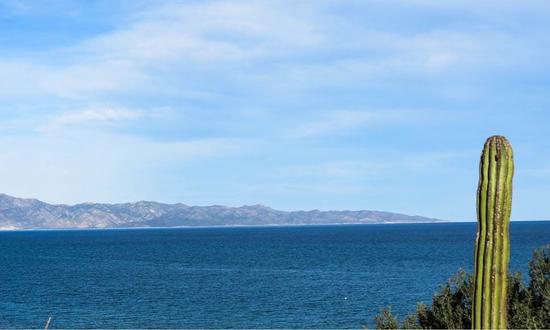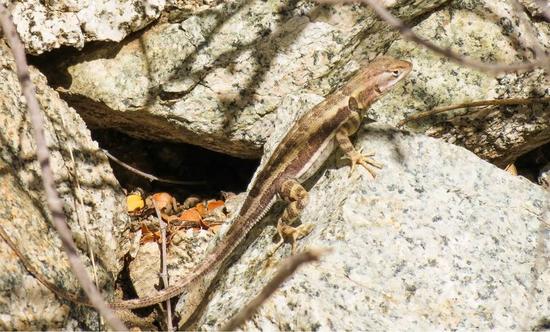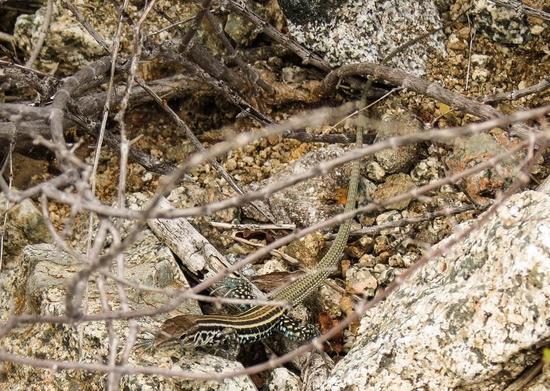Natural History Notes
“I never dreamed that islands, about fifty or sixty miles apart, and most of them in sight of each other, formed of precisely the same rocks, placed under a quite similar climate, rising to a nearly equal height, would have been differently tenanted.” – Charles Darwin on the Galapagos Islands
Contrary to myth, Charles Darwin never had an “Aha!” moment while visiting the Galapagos Islands. Even when the islands’ governor told Darwin that he could tell from which island a Galapagos tortoise was from, simply by the unique shape and curves of its shell, it did not dawn on Darwin that the interisland variation might be the key to solving that mystery of mysteries, of how species came to be. In his defense, during the entire voyage of the Beagle, Darwin saw himself as a geologist; in his accounts in “The Voyage of the Beagle” Darwin spent far more time exploring his interest in rocks, mountain building and the formation of islands. He saw collecting and cataloging animals and plants as more of a perfunctory task of a naturalist, not as building blocks of a greater understanding of life on earth. After that five-year voyage, among his first publications after returning to England was an explanation for the formation of coral atolls, and then a description of the geology at the various stops the Beagle made. Nothing about birds or lizards or plants. Rather he gave his collected specimens and the task of determining if they were new to science or not to others who were established experts of those taxonomic groups. He gave his birds to John Gould, who was the first curator and preserver at the museum of the Zoological Society of London.
It was Gould who showed Drawing that many of his Galapagos birds were closely related species of finches, that they varied from each other by differences in bill shapes (Darwin had originally thought they were related to warblers, blackbirds, and sparrows). Gould also suspected that the finches’ bill shapes varied from island to island, but alas Darwin had made a rookie’s mistake of labeling them from the “Galapagos Islands”, not from the individual islands from which they were collected. Darwin reached out to his shipmates (including Captain Fitzroy), each of whom had also collected birds in the Galapagos, to see if they would share their collected specimens. They did, and through comparisons Gould identified the specific islands where each of Darwin’s finches were collected (the shipmates had correctly cataloged their specimens by the specific island where they were collected). Gould was then able to construct for Darwin an accurate description of the different species of finches on each island and the variability between islands (just like the unique shell shapes of the islands’ tortoises). Darwin was taken aback. How (and why) would these species vary between individual islands, islands that were close enough to be seen across the channel from one to another? That was Darwin’s “Aha!” moment.
Since then, islands everywhere have been important elements in our understanding how new species are created. The key elements are a relatively small group of initial arrivals to an island, and long periods of isolation when that small group can, through natural selection, build into large populations and become increasingly fine-tuned to the particular ecologic features of their island home. Relatively close to home, the islands in the Gulf of California, between the Baja California peninsula and the Mexican mainland, have proved to be a treasure-trove for understanding the conditions that foster the creation of new species. There are roughly a dozen large islands, another dozen or so somewhat smaller islands, and then far more even smaller, mostly unnamed islands to look at. Some of the big islands have many species found nowhere else, but others have few, if any, endemic species. The difference between islands with lots of endemics versus those with few if any boils down to how long they have been isolated and how big they are. Bigger islands have more ecological niches to exploit. Longer isolation gives more time to develop unique ways of exploiting those niches. Some islands were connected to the peninsula or to the mainland when sea levels were much lower during the last ice age. That was a mere (geologically speaking) 15,000-20,000 years ago; apparently not long enough for new species to form. Those that were connected to the continental land masses have plants and animals much like those found on the nearby mainland or peninsula. Those that have been isolated for much longer periods, or have never had any connection at all, have spawned lizards, snakes, and cacti found nowhere else. Some have chuckwallas as big as a healthy house cat, some have barrel cacti as big or bigger than a saguaro cactus. The distribution of the big lizards has been muddied a bit by pre-European contact tribes that valued those lizards as an important year-round protein source. But the more distant islands where they were found were hard to reach over dangerous open-ocean crossings in small canoes. Their solution was to collect the lizards, keep them alive, and move them to closer to shore, smaller, easy to reach islands. A smart move on their part, but they created a challenge for scientists today just which islands were the true ancestral homes for these lizards.
So, do all species evolve on islands? Certainly not on just oceanic islands, but there are land-locked islands that are not surrounded by water. Sand dunes are one example. Sand dunes are an incredibly challenging place to live; blowing sand nearly every day, sand eroding away from or building a top anything forced to stay in one place (like a growing plant), little or no organic content to foster plant growth, intense heat and terribly dry. Yet, as we know, there is abundant life on sand dunes. Fringe-toed lizards, plants, and insects unique to each dune system. The Coachella Valley dunes have their own fringe toed lizard, their own beetle, their own sand-treader cricket, and their own species of milkvetch. Once you evolve species traits that allow you to thrive on a sand dune, those traits can be a liability off the dune, so you are stuck to living on that dynamic pile of wind-blown sand, just like lizards and plants living on an oceanic island, they cannot leave and so are isolated, often for many tens of thousands or millions of years. Just like an island. Not too far away, near the southeast end of the ancient Lake Cahuilla (the Salton Sea) there is a much larger dune system that has also been isolated, the Algodones. Those dunes have their own fringe-toed lizard, their own beetles and their own plants, a bigger dune system, a bigger island, and more endemic species. The dunes of Namibia in southwestern Africa are perhaps the oldest existing dunes on the planet (at least a million years old). Just about everything living there is found no where else. Many species of endemic lizards, beetles, and plants
Another form of land-locked island is referred to as a “sky island”. These are mountains, typically with lands high enough above the hot desert conditions that surround them to provide a cooler refuge for species intolerant of those lower elevation higher temperatures. The mountain is the island, and the desert is the sea. Species of plants and animals pushed south by advancing ice age glaciers can find refuge in the montane sky islands when the glaciers recede, and hotter conditions again consume the lower elevations. Over time some of those species evolve into something new, new penstemons, new cacti, new mallows, and more. Then, when another ice age spreads glaciers across the northlands, and the lower elevations cool, some of those species can spread away from their montane sanctuaries and follow the pines and junipers back north when that ice age wanes and the glaciers again retreat. Our Santa Rosa and San Jacinto National Monument that forms the southern backdrop to the Coachella Valley is a sky island.
The attached images show one of the southernmost and least studied islands in the Gulf of California, Isla Cerralvo, along with two of the endemic lizards found there and nowhere else.
Nullius in verba
Go outside, tip your hat to a chuckwalla (and a cactus), and be safe.


